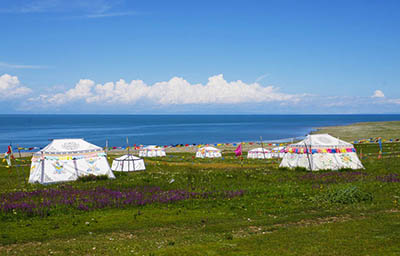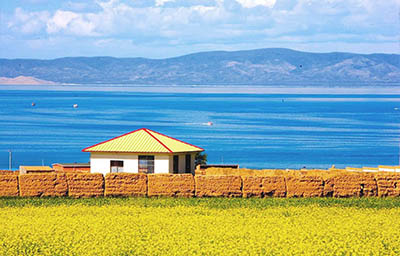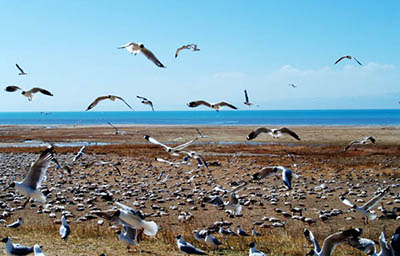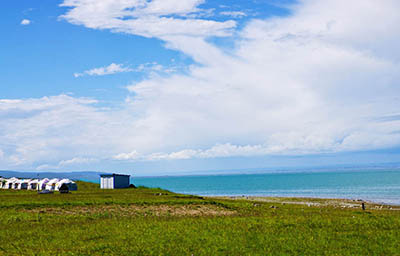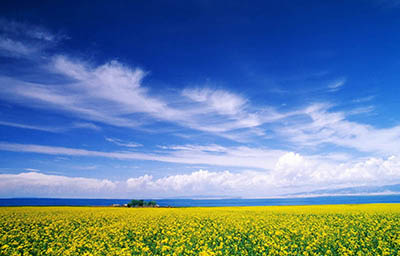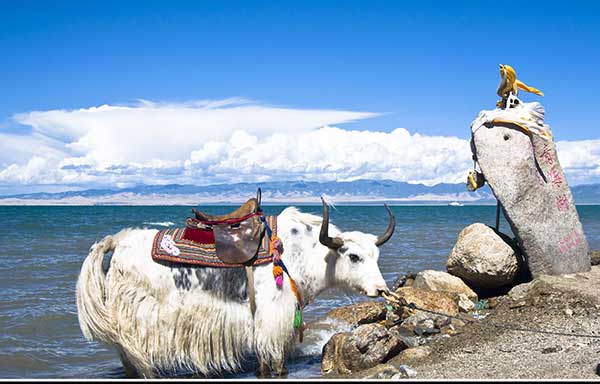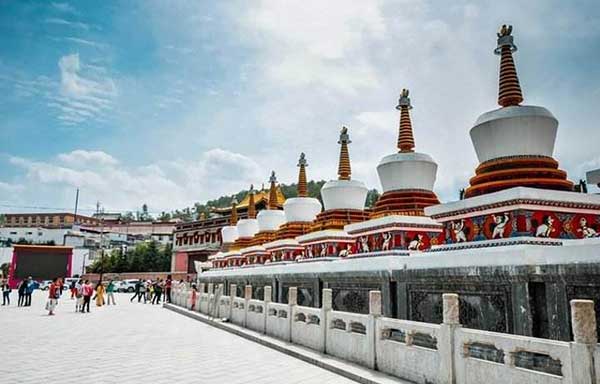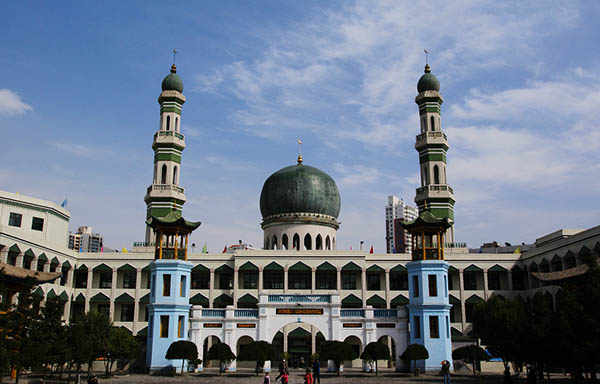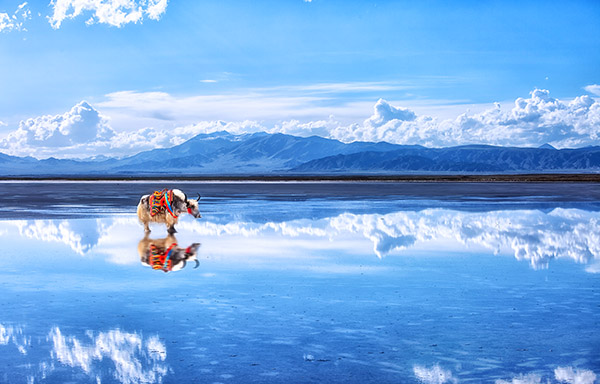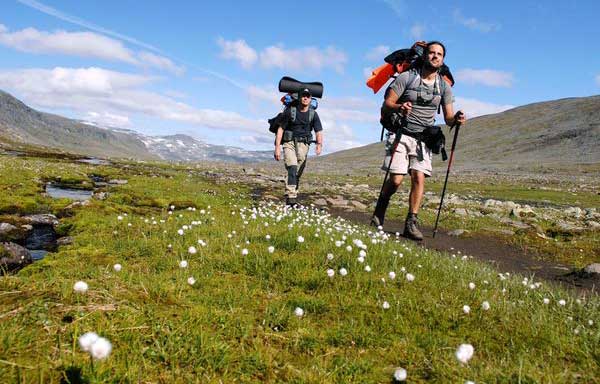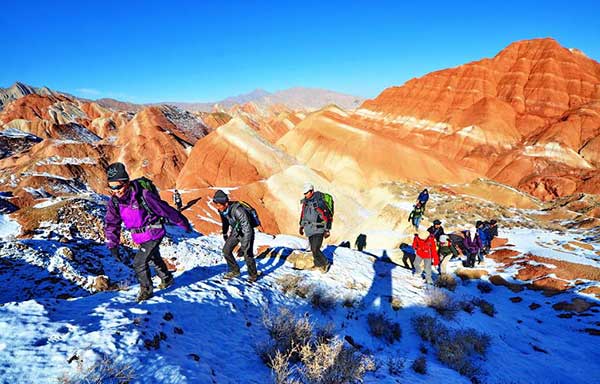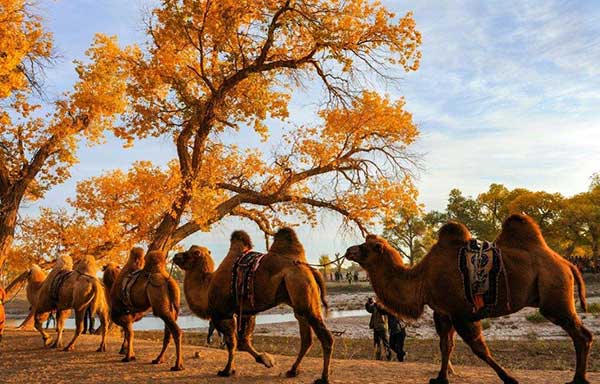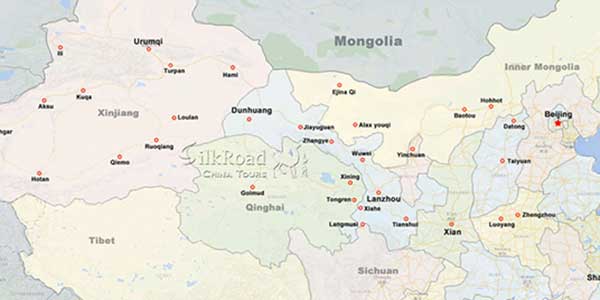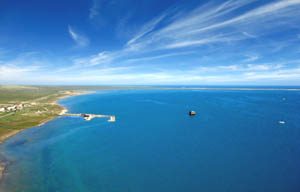 Qinghai Lake (Chinese: 青海湖) is the largest lake in China. Located in China's Qinghai province on an endorheic basin, Qinghai Lake is classified as a saline and alkaline lake. Both the current Chinese name "Qinghai" and the older Mongolian name Kokonur translate to "Blue Lake" or "Teal Sea", are used in English. Qinghai Lake is located about 151 kilometres west of the provincial capital of Xining at 3,205 m (10,515 feet) above sea level in a depression of the Qinghai-Tibet plateau. Twenty-three rivers and streams empty into Qinghai Lake, most of them seasonal. Five permanent streams provide 80% of total influx.
Qinghai Lake (Chinese: 青海湖) is the largest lake in China. Located in China's Qinghai province on an endorheic basin, Qinghai Lake is classified as a saline and alkaline lake. Both the current Chinese name "Qinghai" and the older Mongolian name Kokonur translate to "Blue Lake" or "Teal Sea", are used in English. Qinghai Lake is located about 151 kilometres west of the provincial capital of Xining at 3,205 m (10,515 feet) above sea level in a depression of the Qinghai-Tibet plateau. Twenty-three rivers and streams empty into Qinghai Lake, most of them seasonal. Five permanent streams provide 80% of total influx.
The lake has fluctuated in size, shrinking over much of the 20th century, but increasing since 2004. Despite its salinity, it has an abundance of fish, such as the edible naked carp (Gymnocypris przewalskii)
Qinghai Lake is sandwiched between Hainan and Haibei Tibetan Autonomous Prefectures in northeastern Qinghai. The lake is located at the crossroads of several bird migration routes across Asia. Many species use Qinghai as an intermediate stop during migration. As such, it is a focal point in global concerns of avian influenza (H5N1), as a major outbreak here could spread the virus across Europe and Asia, further increasing the chances of a pandemic. Minor outbreaks of H5N1 have already been identified at the lake. At the tip of the peninsula on the western side of the lake are the "Bird Islands" (Cormorant Island and Egg Island), which have been bird sanctuaries of the Qinghai Lake Natural Protection Zone since 1997. The lake often remains frozen for three months continuously in winter.
There is an island in the western part of the lake with a temple and a few hermitages called "Mahādeva, the Heart of the Lake" (mTsho snying Ma hā de wa) which historically was home to a Buddhist monastery.] No boat was used during summer, only when the lake froze over in winter could monks reach the mainland or pilgrims visit the temple - many of whom used to come from Mongolia. A nomad described the size of the island by saying that: "if in the morning a she-goat starts to browse the grass around it clockwise and its kid anti-clockwise, they will meet only in the night, which shows how big the island is." It is also known as the place where Gushri Khan and other Qoshot Mongols migrated to during the 1620s.
The lake is also sometimes circumambulated by pilgrims from the region. Przhevalsky estimated it would take about 8 days by horse or 15 walking to circumambulate the lake, but pilgrims report it takes about 18 days on horseback, and one took 23 days walking to complete the circuit.
Since the Han Dynasty (206 BCE–220 CE), Qinghai Lake was called the West Sea (Chinese: 西海; pinyin: Xī Hǎi), and substantial numbers of Han Chinese lived in the Xining valley. In the 17th century, Mongolic-speaking Oirat and Khalkha tribals migrated to Qinghai and became known as Qinghai Mongols. In 1724, the Qinghai Mongols led by Lobzang Danjin revolted against China's Qing Dynasty (1644–1912). The Yongzheng Emperor, after putting down the rebellion, stripped away Qinghai's autonomy and imposed direct rule. Although some Tibetans lived around the lake, the Qing maintained an administrative division since the time of Güshi Khan between the Dalai Lama's western realm (a bit smaller than the current Tibet Autonomous Region) and the Tibetan-inhabited areas in the east. Yongzheng also sent Manchu and Han settlers to dilute the Mongols.
During the Republican era (1912-1949), an annual ceremony was conducted to the God of the Lake. By this time, the Han people formed a majority of Qinghai Province's residents, although Hui people ("Chinese Muslims") dominated the government. The Kuomintang Hui General Ma Bufang, the Governor of Qinghai, and other high ranking Qinghai and Chinese government officials attended the Kokonuur Lake Ceremony where the God of the Lake was worshipped, and during the ritual, the Chinese national Anthem was sung, all participants bowed to a Portrait of Kuomintang party founder Dr. Sun Zhongshan, and the God of the Lake was also bowed to, and offerings were given to him by the participants, which included the Muslims. Ma Bufang invited Kazakh Muslims to attend the Ceremony honoring the God.
After the 1949 Chinese revolution, refugees from the 1950s Anti-Rightist Movement settled in the area west of Qinghai Lake. After the Chinese economic reform in the 1980s, increasing numbers of Tibetans began to migrate to the lake because of business opportunities. However, the increased human density caused ecological stress, as "fresh grass production in Gangcha County north of the lake had declined from a mean of 2,057 kilograms per hectare to 1,271 in 1987". In 2001, the State Forestry Administration of China launched the "retire cropland, restore grasslands" (退耕,还草) campaign and started confiscating Tibetan and Mongol pastoralists' guns in order to preserve the endangered Przewalski's gazelle that they had been encroaching upon.
Gallery
Attractions in the area
Related Tours
General Information
Alias: No
Loc: 155 km from Xining
Entrance: 100 RMB
Open Time: All day
Relevant blogs
-
How did the name of Tianshui in Gansu come about?
The name Tianshui is very pleasant to the ear, and it reminds one of that exquisitely beautiful verse, "After getting drunk, one doesn't know if the sky is in
-
The 8th Silk Road Hotel Festival was successfully held i
On December 27th, the "8th Silk Road Hotel Festival" grandly opened at the Yujing International Hotel in Zhangye. This hotel festival gathered industry experts,
-
The Karez Irrigation System in Turpan has been selected
On September 3rd, at the 75th Executive Council Meeting of the International Commission on Irrigation and Drainage held in Sydney, Australia, the 2024 (11th bat
-
What is the connection between "dragons" and "snakes
In traditional Chinese culture, the snake has a dual identity of auspiciousness and danger. Ancient people believed that the snake not only possesses divine cha
-
Endangered Przewalski's Horses Spotted at Dunhuang Yume
<p>In early February, a group of special "visitors"—the Przewalski's horses—appeared at the Dunhuang Yumen Pass scenic area in Gansu Province, a U
-
The Fourth Dunhuang Cultural Tourism Supplier Conference
On the morning of February 18th, the Fourth Dunhuang Cultural Tourism Supplier Conference in Northwest China commenced at the Dunhuang International Convention

